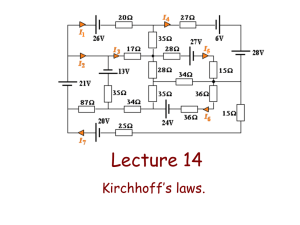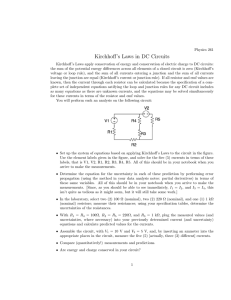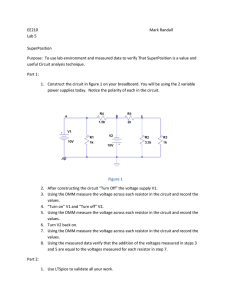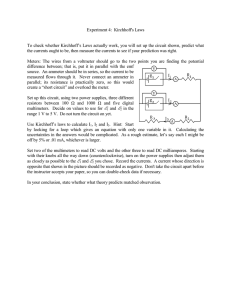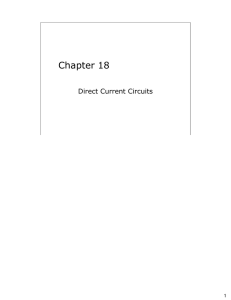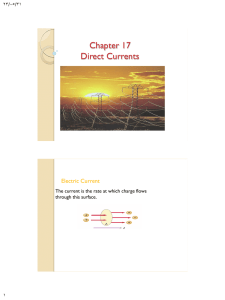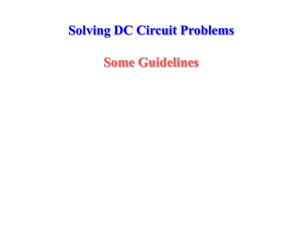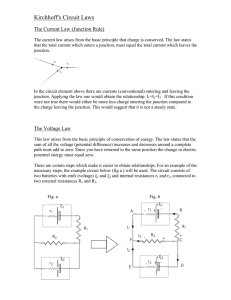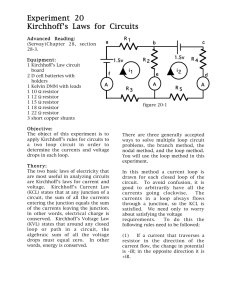Kirchhoff`s Rules
advertisement
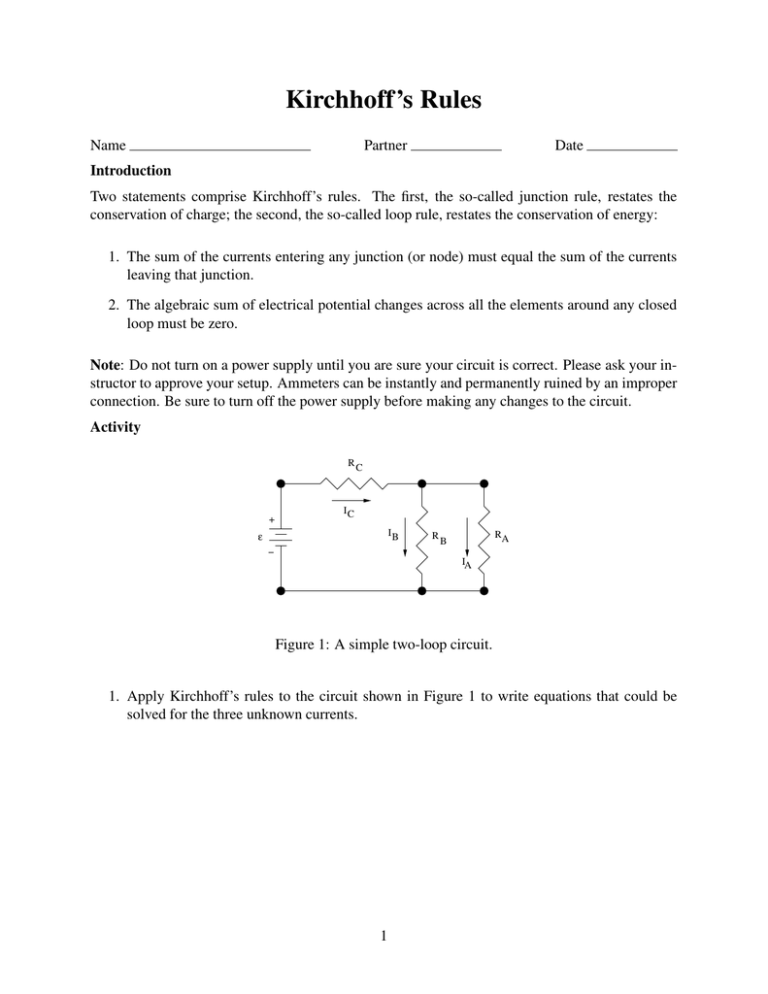
Kirchhoff’s Rules Name Partner Date Introduction Two statements comprise Kirchhoff’s rules. The first, the so-called junction rule, restates the conservation of charge; the second, the so-called loop rule, restates the conservation of energy: 1. The sum of the currents entering any junction (or node) must equal the sum of the currents leaving that junction. 2. The algebraic sum of electrical potential changes across all the elements around any closed loop must be zero. Note: Do not turn on a power supply until you are sure your circuit is correct. Please ask your instructor to approve your setup. Ammeters can be instantly and permanently ruined by an improper connection. Be sure to turn off the power supply before making any changes to the circuit. Activity RC + IC IB ε − R RA B IA Figure 1: A simple two-loop circuit. 1. Apply Kirchhoff’s rules to the circuit shown in Figure 1 to write equations that could be solved for the three unknown currents. 1 2. Solve the equations for the three currents in terms of the supplied voltage (emf), ε, and the three resistors, RA , RB , and RC . 3. Now use Ohm’s law and the sum rules for resistors in series and in parallel to derive expressions for the three currents. 4. Are the results of 3 and 4 the same? They should be. 2 5. You have three resistors at your workstation with resistance values of approximately 220 Ω, 330 Ω, and 470 Ω. Let RA be the 220 Ω resistor, RB be the 330 Ω resistor, and RC be the 470 Ω resistor. Record the resistance of each resistor below according to the color code. 6. Use a DMM to measure the value of each resistor and record the results below. Do these values agree with the color code values to within the uncertainties? 7. Prediction: If the emf, ε, were 5.0 V, what values do you predict for the three currents? Use the resistance values measured with the DMM. 8. Configure the circuit as in the Figure 1, using the power supply as the source of emf. With the power supply off, set the current control at mid-range and the voltage control all the way down. Set up a DMM to measure voltage and connect it in parallel with the power supply to measure ε. Set up another DMM as an ammeter and connect it in series with resister R A to measure the current IA . 9. After checking with your instructor that the circuit is correct, turn on the power supply and set ε to about 5.0 V. Record ε and IA , then turn off the power supply. 3 10. Set up the circuit to measure IB . After getting assurance from you instructor that your circuit is correct, turn on the power supply and record ε and IB . Turn off the power supply. 11. Set up, measure and record IC . 12. Do your results agree with your predictions to within experimental uncertainties? Explain. 4

